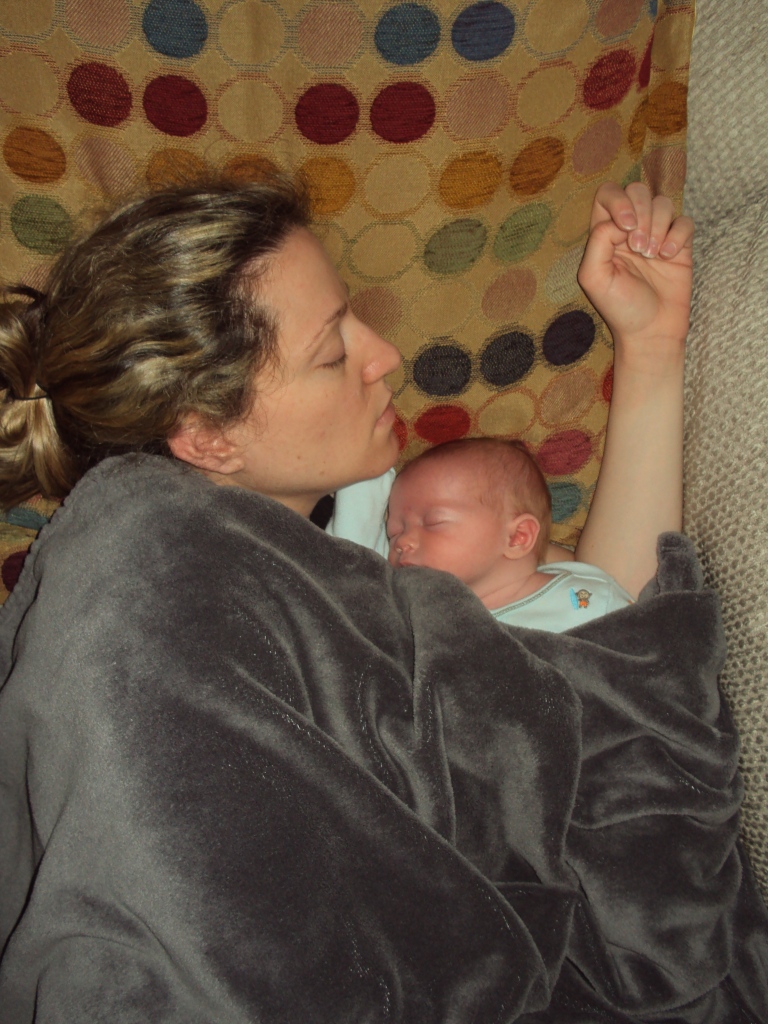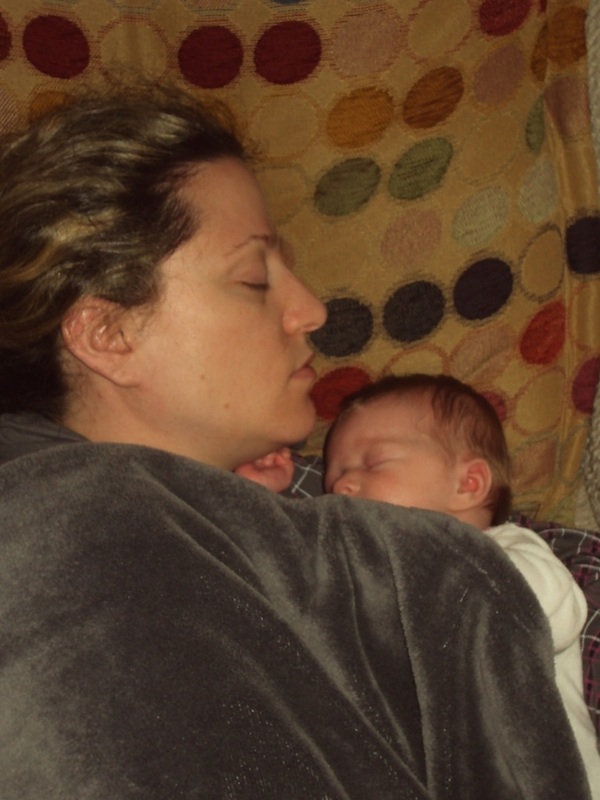
I remember when the twins where infants and my husband and I were in survival mode. Knowing that our 3.5 year old wouldn’t be letting us sleep in most mornings, getting our sleep throughout the night was critical to be able to function well enough to care for these three little ones, as well as care for us. But you have a baby (or babies in my case) and you are going to be up throughout the night. It’s going to happen, as it should, and sometimes as parents we make decisions throughout the night just to get that extra hour of sleep. Decisions that could potentially be harmful to our baby.
Guilty.
That’s me - sleeping on the couch with my son.

And daughter.

And I knew better.
But I needed that hour of sleep.
When I speak to new parents one of the first questions I ask is “who co-sleeps?” I then correct myself and ask “who is making the lifestyle decision to bed share and whom is reactively bed sharing?” Most hands sheepishly raise for the latter. When I look at these pictures of myself so many what-ifs enter my mind but I was reactively finding a solution to my sleep deprived situation and it was the most dangerous route I could have taken.
Don’t be me.
Today the The American Academy of Pediatrics released an updated 2016 report on their safe sleep environment recommendations. Included in the report are their previous recommendations of the ABC’s of safe sleep:
As a sleep professional I do follow the guidelines and sleep recommendations of the AAP on lowering the risk of SIDS and other sleep-related infant deaths with my client’s, as does my team. We leave the duration of room sharing up to parents and have helped many families sleep train while continuing to safely room share.
What’s now included in the AAP’s recommendation are safe sleep practices if choosing to bed share because here’s the thing - even though organizations like the AAP or Good Night Sleep Site recommend not sharing an unsafe sleep environment with your infant, parents are exhausted and when exhausted make unsafe decisions like falling asleep on the couch while breastfeeding. The AAP now recognizes that and rather than not saying don’t do it, it’s unsafe, they know the importance of educating parents on the safest route to take to bed-share and that it is a big lifestyle decision and one that needs a plan with both partners on board. If you are going to fall asleep while breastfeeding do it in the safest way possible.
Parents need a plan. They need to know what will be involved in safely preparing their sleep environment for bed sharing and everything needs to be implemented to the fullest extent before the baby is ever in bed with either parent.
I stand behind the American Academy of Pediatrics and choose room sharing as the safer route but I also feel it’s my responsibility to educate parents on the safest steps of whichever sleep environment is chosen.
Don’t be me.
There is always a safer way of doing it and educating yourself is the first step.
I provide free child and family sleep support on my Facebook page. I invite you to join our sleep community as I work towards Good Night Sleep Site's mission of a healthier rested family unit. For more sleep tips please visit Good Night Sleep Site and visit me on Instagram and Twitter. Join our movement and #BringBackBedtime.